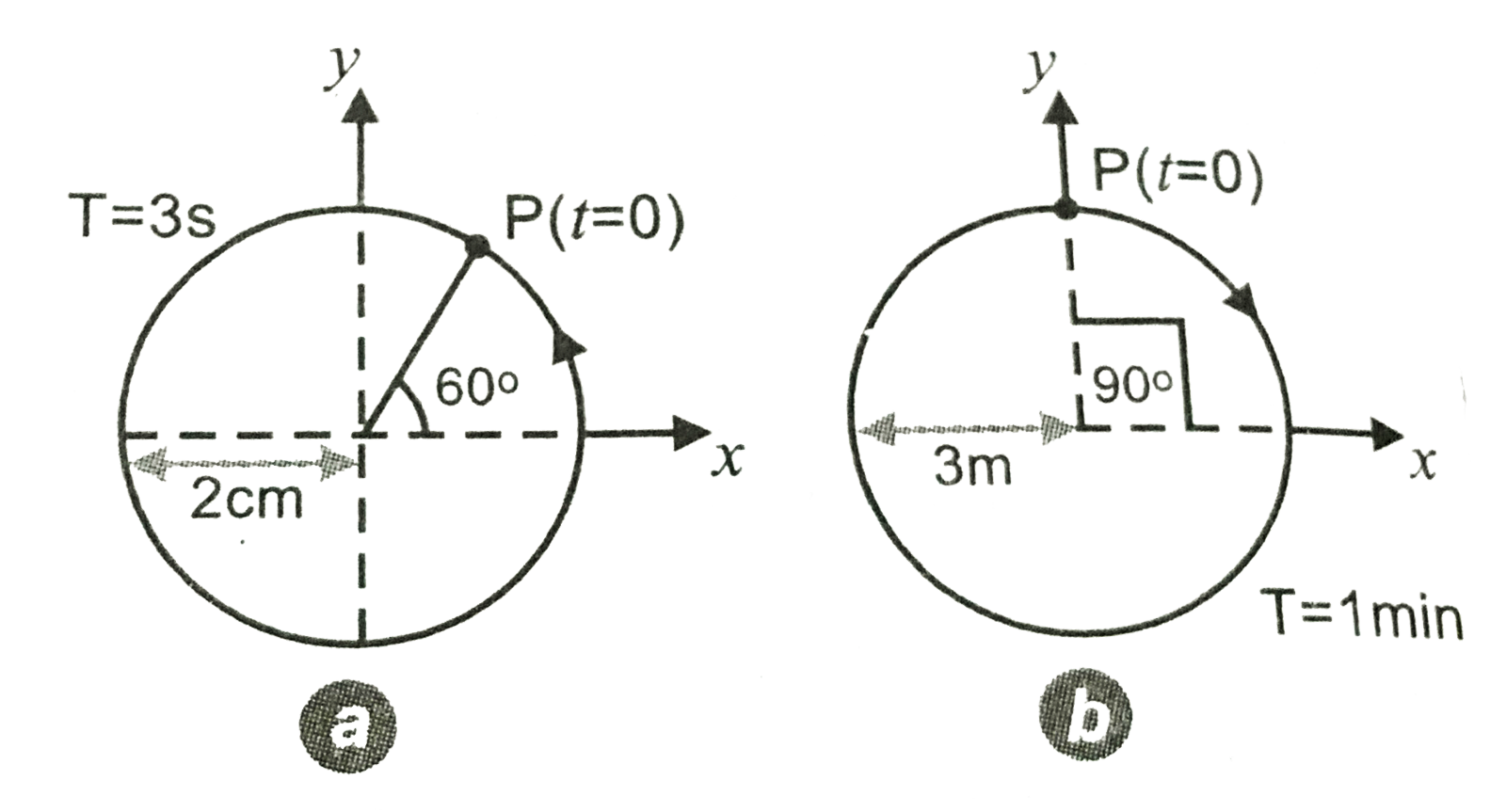If the motion of revolving particle is perodic in nature, give the nature of motion or projection of the revolving particle along the diameter.
To solve the question, we need to analyze the motion of a particle that is revolving in a circular path and determine the nature of its projection along the diameter.
1. Understanding Circular Motion:
- A particle moving in a circular path with a constant radius r is undergoing circular motion. This motion is periodic, meaning it repeats itself after a fixed time interval known as the time period T.
2. Periodic Nature of Circular Motion:
- Since the particle returns to its starting point after each complete revolution, we can say that the motion is periodic. The time taken to complete one full revolution is the time period T.
3. Projection Along the Diameter:
- When we project the motion of the revolving particle along the diameter of the circular path, we can visualize this as dropping a vertical line from the particle to the diameter.
- As the particle moves around the circle, its projection on the diameter will move up and down.
4. Analyzing the Projection:
- As the particle moves from the lowest point (B) to the highest point (A), its projection will move from the center (equilibrium position) upwards to the maximum height (which is equal to the radius r), and then back down to the center and further down to the lowest point.
- This creates a back-and-forth motion along the diameter.
5. Nature of the Motion:
- The motion of the projection along the diameter is characterized by oscillation about the equilibrium position (the center of the diameter).
- This type of motion is known as Simple Harmonic Motion (SHM). In SHM, the displacement from the equilibrium position varies sinusoidally with time.
6. Amplitude of the Motion:
- The maximum displacement of the projection from the equilibrium position is equal to the radius r of the circular path. Therefore, the amplitude A of the SHM is equal to the radius r.
Conclusion:
- The projection of a particle undergoing circular motion along the diameter exhibits Simple Harmonic Motion, with the amplitude equal to the radius of the circular path.
- A particle moving in a circular path with a constant radius r is undergoing circular motion. This motion is periodic, meaning it repeats itself after a fixed time interval known as the time period T.
- Since the particle returns to its starting point after each complete revolution, we can say that the motion is periodic. The time taken to complete one full revolution is the time period T.
- When we project the motion of the revolving particle along the diameter of the circular path, we can visualize this as dropping a vertical line from the particle to the diameter.
- As the particle moves around the circle, its projection on the diameter will move up and down.
- As the particle moves from the lowest point (B) to the highest point (A), its projection will move from the center (equilibrium position) upwards to the maximum height (which is equal to the radius r), and then back down to the center and further down to the lowest point.
- This creates a back-and-forth motion along the diameter.
- The motion of the projection along the diameter is characterized by oscillation about the equilibrium position (the center of the diameter).
- This type of motion is known as Simple Harmonic Motion (SHM). In SHM, the displacement from the equilibrium position varies sinusoidally with time.
- The maximum displacement of the projection from the equilibrium position is equal to the radius r of the circular path. Therefore, the amplitude A of the SHM is equal to the radius r.
- The projection of a particle undergoing circular motion along the diameter exhibits Simple Harmonic Motion, with the amplitude equal to the radius of the circular path.
Topper's Solved these Questions
- MECHANICAL WAVESBOOK - CBSE COMPLEMENTARY MATERIALCHAPTER - MECHANICAL WAVESEXERCISE - TWO MARK QUESTIONS
21 Videos
- MECHANICAL WAVESBOOK - CBSE COMPLEMENTARY MATERIALCHAPTER - MECHANICAL WAVESEXERCISE - THREE MARK QUESTIONS
10 Videos
- KINETIC THEORY OF GASESBOOK - CBSE COMPLEMENTARY MATERIALCHAPTER - KINETIC THEORY OF GASESEXERCISE - Objective question
20 Videos
- NEWTON'S LAWS OF MOTIONBOOK - CBSE COMPLEMENTARY MATERIALCHAPTER - NEWTON'S LAWS OF MOTIONEXERCISE - Laws Of Motion
20 Videos
Similar Questions
Knowledge Check
The motion of a particle in SHM of
Auniform speedBuniform accelerationCuniform velocityDnon uniform speedRandom motion of colloid particle is known as
ADialysisBBrownian movementCElectro-osmosisDTyndall effectThe random motion of colloidal particles in the dispersion medium is known as
ADialysisBBrownian movementCElectroosmosisDTyndall effect
If equation of displacement of aparticle is y=AsinQt+BcosQt then find the nature of the motion of particle.
View SolutionIn circular motion of a particle,
View SolutionIn Brownian movement of motion, the paths of the particle are
View SolutionThe motion of the particle along the circumference of the circle is a
View SolutionIn brownian motion , the paths of the particles are :
View Solution

